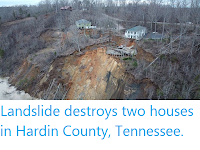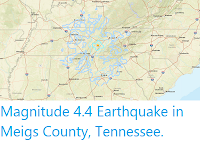An outbreak of Tornadoes on Tuesday 3 March 2020 has killed at least 25 people in Tennessee. The outbreak occurred slightly after midnight, when most of the population was sleeping, so many people did not make it to storm shelters on time. The majority of the fatalities happened in Putnam County, to the east of Nashville, where nineteen people are known to have died, with three recorded deaths so far in Wilson County, two in Davidson and one in Benton. In addition to the known fatalities a number of people are still missing, and around 150 people are being treated in hospital for injuries sustained during the outbreak. It is though likely that the number of victims will rise as emergency teams search through the wreckage left by the storm. As well as the damage to private homes the area has suffered damage to infrastructure, with Nashville Electric reporting four substations closed down due to tornado damage, leaving around 44 000 people without electricity, and severe damage to buildings at John C Tune International Airport.
Damage to a restaurant in Nashville, Tennessee, following a tornado outbreak on 3 March 2020. AP.
Tornadoes are formed by winds within large thunder storms called super
cells. Supercells are large masses of warm water-laden air formed by hot
weather over the sea, when they encounter winds at high altitudes the
air within them begins to rotate. The air pressure will drop within
these zones of rotation, causing the air within them so rise, sucking
the air beneath them up into the storm, this creates a zone of rotating
rising air that appears to extend downwards as it grows; when it hits
the ground it is called a tornado.
Damage to retail outlets in Nashville, Tennessee, following a tornado outbreak on 3 March 2020. Jason Kempin/Getty Images.
Tornadoes can occur anywhere in the world, but are most common, and most
severe, in the area of the American mid-west known as 'Tornado Ally',
running from Texas to Minnisota, which is fuelled by moist air currents
from over the warm enclosed waters of the Gulf of Mexico interacting
with cool fast moving jet stream winds from the Rocky Mountains. Many
climatologists are concerned that rising temperatures over the Gulf of
Mexico will lead to more frequent and more severe tornado events.
Simplified diagram of the air currents that contribute to tornado formation in Tornado Alley. Dan Craggs/Wikimedia Commons/NOAA.
See also...








